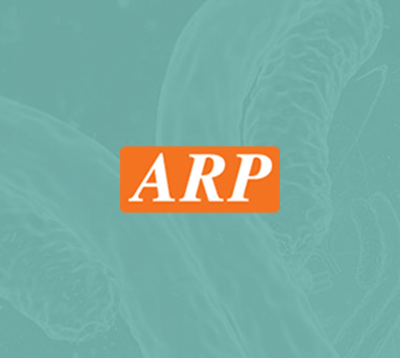| Product Name | Anti-CD4 / T4 Monoclonal Antibody |
|---|---|
| Description | CD4 is a single chain transmembrane glycoprotein and belongs to immunoglobulin supergene family. In extracellular region there are 4 immunoglobulin-like domains (1 Ig-like V-type and 3 Ig-like C2-type). Transmembrane region forms 25 aa, cytoplasmic tail consists of 38 aa. Domains 1,2 and 4 are stabilized by disulfide bonds. The intracellular domain of CD4 is associated with p56Lck, a Src-like protein tyrosine kinase. It was described that CD4 segregates into specific detergent-resistant T-cell membrane microdomains. Extracellular ligands: MHC class II molecules (binds to CDR2-like region in CD4 domain 1); HIV envelope protein gp120 (binds to CDR2-like region in CD4 domain 1); IL-16 (binds to CD4 domain 3), Human seminal plasma glycoprotein gp17 (binds to CD4 domain 1), L-selectin Intracellular ligands: p56LckCD4 is a co-receptor involved in immune response (co-receptor activity in binding to MHC class II molecules) and HIV infection (human immunodeficiency virus; CD4 is primary receptor for HIV-1 surface glycoprotein gp120). CD4 regulates T-cell activation, T/B-cell adhesion, T-cell diferentiation, T-cell selection and signal transduction. Defects in antigen presentation (MHC class II) cause dysfunction of CD4+ T-cells and their almost complete absence in patients blood, tissue and organs (SCID immunodeficiency). |
| Clone | MEM-16 |
| Immunogen | HPB cell line (human peripheral blood leukemia T-cells) |
| Isotype | IgM |
| Specificity |
The antibody MEM-16 recognizes an epitope EF loop of D1 domain of CD4 antigen, a 55 kDa transmebrane glycoprotein expressed on a subset of T lymphocytes (“helper“ T-cells) and also on monocytes, tissue macrophages and granulocytes.
|
| Reactivity | Human |
| Applications | FC, IP |
| Form | Tris buffered saline (TBS) with 15 mM sodium azide, approx. pH 8.0 |
| Storage | Store at 2-8°C. Do not freeze. |
| Background |
CD4 is a single chain transmembrane glycoprotein and belongs to immunoglobulin supergene family. In extracellular region there are 4 immunoglobulin-like domains (1 Ig-like V-type and 3 Ig-like C2-type). Transmembrane region forms 25 aa, cytoplasmic tail consists of 38 aa. Domains 1,2 and 4 are stabilized by disulfide bonds. The intracellular domain of CD4 is associated with p56Lck, a Src-like protein tyrosine kinase. It was described that CD4 segregates into specific detergent-resistant T-cell membrane microdomains. Extracellular ligands: MHC class II molecules (binds to CDR2-like region in CD4 domain 1); HIV envelope protein gp120 (binds to CDR2-like region in CD4 domain 1); IL-16 (binds to CD4 domain 3), Human seminal plasma glycoprotein gp17 (binds to CD4 domain 1), L-selectin Intracellular ligands: p56LckCD4 is a co-receptor involved in immune response (co-receptor activity in binding to MHC class II molecules) and HIV infection (human immunodeficiency virus; CD4 is primary receptor for HIV-1 surface glycoprotein gp120). CD4 regulates T-cell activation, T/B-cell adhesion, T-cell diferentiation, T-cell selection and signal transduction. Defects in antigen presentation (MHC class II) cause dysfunction of CD4+ T-cells and their almost complete absence in patients blood, tissue and organs (SCID immunodeficiency). |
| Supplier | Exbio |
All Research Products are sold for laboratory RESEARCH USE ONLY and ARE NOT TO BE USED FOR HUMAN OR ANIMAL THERAPEUTIC OR DIAGNOSTIC APPLICATIONS. The information presented is believed to be accurate; however, said information and products are offered without warranty or guarantee since the ultimate conditions of use and the variability of the materials treated are beyond our control. Nothing disclosed herein is to be construed as a recommendation to use our products in violation of any patents. ARP American Research Products, Inc. does not submit its products for regulatory review by any government body or other organization, and we do not validate them for clinical, therapeutic or diagnostic use, or for safety and effectiveness. You are solely responsible for making sure that the way you use the products complies with applicable laws, regulations and governmental policies and for obtaining all necessary approvals, intellectual property rights, licenses and permissions that you may need related to your use. Under no circumstances shall ARP American Research Products, Inc. be liable for damages, whether consequential, compensatory, incidental or special, strict liability or negligence, breach of warranty or any other theory arising out of the use of the products available from ARP American Research Products, Inc. Nothing contained herein warrants that the use of the products will not infringe on the claims of any patents covering the product itself or the use thereof in combination with other products or in the operation of any process. ARP American Research Products, Inc. disclaims any and all representations or warranties of any kind whatsoever, express or implied, including without limitation any implied warranties of merchantability or fitness for a particular purpose, of non-infringement, or regarding results obtained through the use of any product, whether arising from a statute or otherwise in law or from a course of performance, dealing or usage of trade.



